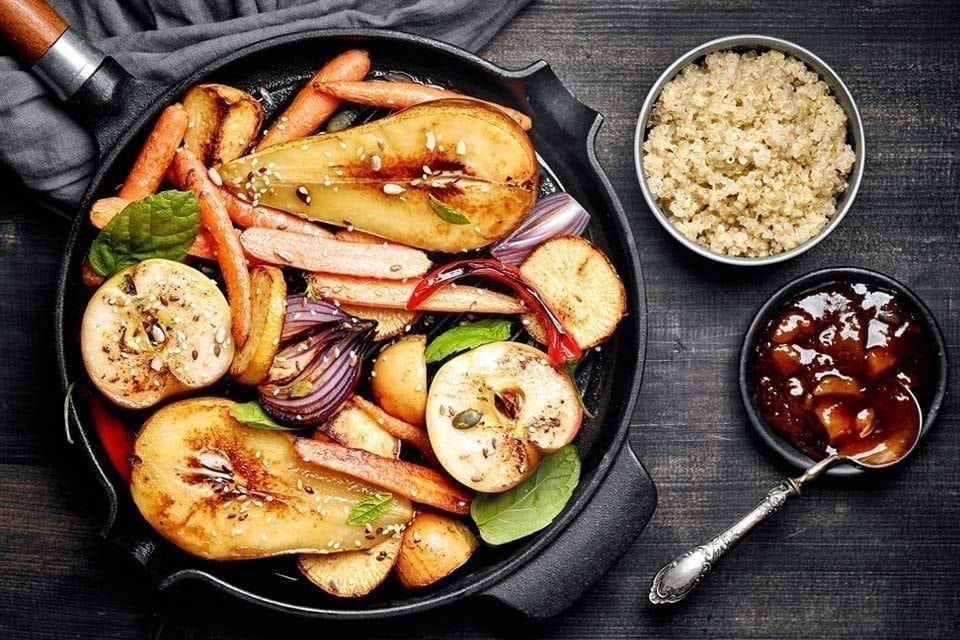If you’ve tracked calories for any amount of time, you’ve noticed how quickly they can add up. Logging your go-to Starbucks drink or a night out on the town at your favorite restaurant can be downright shocking. That’s part of the beauty of calorie counting: You become aware of your choices and can make informed decisions about when, what and how much to eat. But, it can sometimes feel discouraging seeing those numbers add up so quickly.
Feeling full and satisfied even while losing pounds is essential for long-term success with weight loss and eventually weight maintenance. Here are some tricks to feeling fuller while trying to stay within your calorie goals:
1. Choose fat, fiber and protein. When sitting down to a meal or snack, make sure your choices have plenty of fiber to help you feel full. Also, choose foods that contain fat and protein because those macronutrients help you feel full and satisfied for longer periods of time.
2. Pick foods that add bulk without adding too many calories.
Focus on foods that are high in volume (think: fiber and water) but low in calories, such as fruits and vegetables. As mentioned above, fiber in foods helps to slow down absorption, making fullness last longer.
3. Put everything you plan to eat on one plate.
Seeing a plate full of food (half full of vegetables, a quarter with a starch and another quarter with a protein) helps your brain register that you’ve eaten adequate amounts.
4. Slow down. Most of us eat too quickly and don’t take time to enjoy our meals or snacks. To get the most enjoyment from your food and to help you remember to take it slow, try these tricks: Use smaller utensils, chew your food more or add spiciness to your meals.
5. Take a 15- to 20-minute break before getting seconds. Notice the feeling you get when you are satisfied but not uncomfortable. Stop there, pause and allow yourself to eat more in a few minutes if needed. Most of the time, you’ll notice the desire to eat dissipates as you allow yourself to take a break.
6. Ditch the distractions. Eating while distracted has been shown in a recent meta-analysis to lead to overeating. The same study also showed that paying attention to your meal is linked to eating less later on. By ditching the distractions (think: eating at your desk, in front of the TV, in your car, etc.), it can be far easier to pay attention, be mindful and recognize when it’s time to put the fork down.
7. Stay hydrated. Sip on water before, during and after meals. This can help you be more in tune with fullness and can help your overall health as well. Proper hydration is important for enabling your body to function at its best.
8. Listen to your body. Pay attention to when it’s time to stop. Taking a moment to tune in to the present moment and honor your body’s fullness cues is a powerful way to feel fuller with less food. Different people experience fullness cues differently, but here are a few common indicators of fullness: food stops tasting as good as it did at first, taking a deep breath midmeal, setting your fork down or feeling satisfied and content.
Counting calories can be a great way to gain powerful insight into your routine behaviors and to be accountable for your eating choices. It’s important to find ways to feel full and satisfied even when trying to reduce overall calories. These are some ideas to get you started (or to keep you going!). We’d love to hear your ideas below in the comments.




